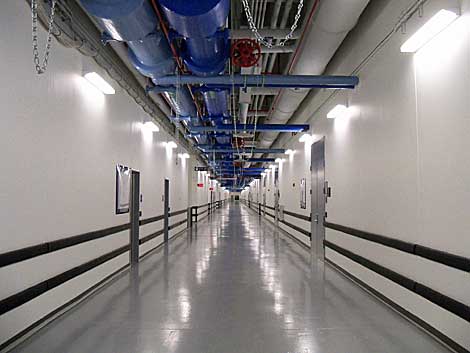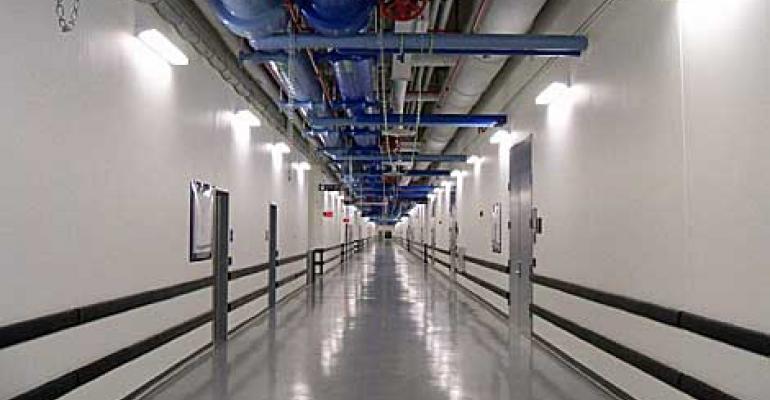
The long main hallway of the NYSE Euronext data center provides a sense of the immense scale of the 400,000 square foot facility in New Jersey. (Photo: Rich Miller)
In the latest consolidation among stock exchanges, The Intercontinental Exchange (ICE) will acquire NYSE Euronext for about $8.2 billion, the two companies said today. NYSE Euronext operates the New York Stock Exchange, as well as a global network of data centers powering its shift to an electronic trading platform. That includes two immense, starte-of-the-art data centers that NYSE Euronext has built in New Jersey and London.
What will the ICE acquisition mean for these facilities? It's an important question, as a joint bid for NYSE Euronext last fall by ICE and NASDAQ OMX raised the specter of a data center consolidation that might close one of the major financial data centers in New Jersey. The dynamic of today's deal is very different, as there's less overlap in the data center footprint of ICE and NYSE. ICE has a primary data center in Chicago and a backup facility in Atlanta, while NYSE EuroNext has major "liquidity centers" in Mahwah, N.J. and Basildon, England.
The presentation accompanying today's announcement mentioned "rationalization of technology platforms," but also noted ICE's intent to "build liquidity centers and connectivity," suggesting the NYSE data center infrastructure is seen as a key asset going forward. NYSE Technologies, the technology arm of NYSE Euronext, said it has no additional comment for the moment.
Here's some additional background from DCK's coverage of NYSE Euronext's data center infrastructure:
NYSE's Data Fortress Powering the Financial Cloud: There are few data centers in the world that are more difficult to get into than the new NYSE Euronext facility in Mahwah, New Jersey. The huge building features extremely strong access control, a substantial security perimeter, and is built to survive … well, just about anything. “It is more robust than your typical structure,” said Steve Rubinow, Chief Information Office at NYSE Euronext, who said the data center “can withstand levels of punishment – both man-made and natural – that other facilities might not withstand.” The 400,000 square foot data center has been engineered for security, speed and reliability to support its mission as the nerve center for the NYSE”s electronic trading operations.
Closer Look: NYSE EuroNext's NJ Data Center: The NYSE Euronext data center in Mahwah, New Jersey serves as a bridge between the New York Stock Exchange’s history as the nation’s oldest trading floor, and a future in which the majority of trading volume will be driven by computers. The halls of the facility are lined with street signs bearing the names of streets in downtown Manhattan, which provide a connection between Wall Street and the data center, and also create a navigational grid for staff within the 400,000 square foot building.
Closer Look: The NYSE Basildon Data Centre: Over the last several years, NYSE Euronext has opened a series of data centers in major global financial hubs. These “liquidity hubs” provide the infrastructure for the NYSE to handle the huge growth in demand for colocation for low-latency trading, which has surged as trading activity has shifted to electronic exchanges. In this video, NYSE Technologies provides an overview of the operations at its liquidity center in Basildon, England.

